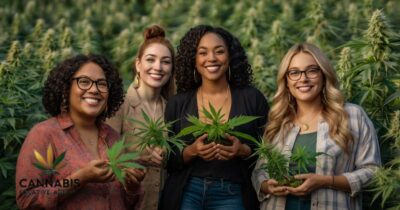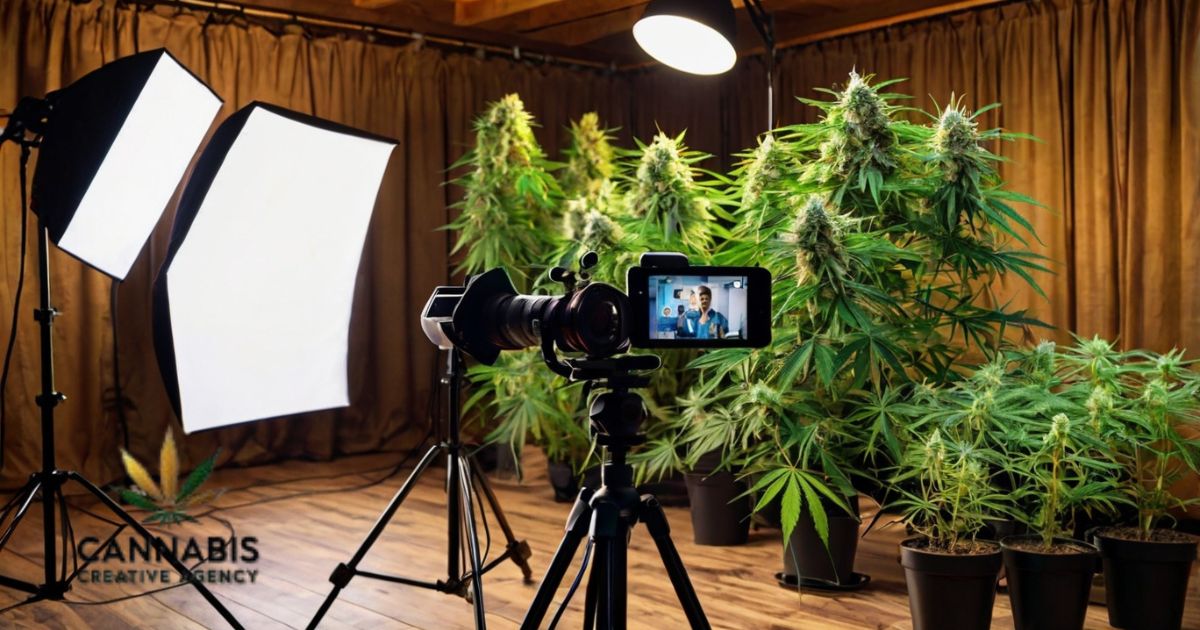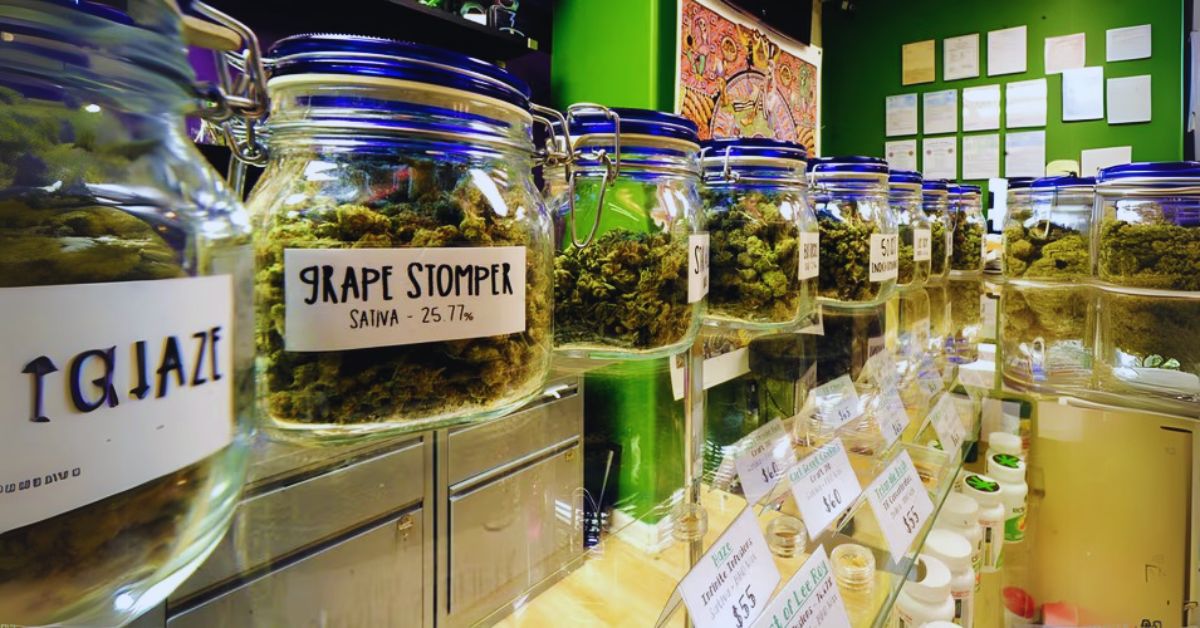Why Diversity & Inclusion in Cannabis Marketing Matter Now More Than Ever We’re in the midst of a cultural shift, and marketing is at the heart of it. As the world becomes more connected and aware, brands across industries are being called to do more than sell products—they’re being asked to reflect the diversity of their customer base and ensure that everyone feels represented. This is especially true in the cannabis industry, where diversity and inclusion are often lacking despite the growing consumer demand.
In this article, we’ll explore why Diversity and inclusion in Cannabis Marketing aren’t just a trend but a movement that businesses can’t afford to ignore. We’ll cover everything from creating a more inclusive marketing strategy to understanding how to bridge gaps for historically marginalized cannabis marketing careers communities.
Understanding Diversity & Inclusion in Cannabis Marketing
What Does Diversity Mean in Cannabis Marketing?
When you think about diversity in cannabis marketing, it’s not just about race or gender. It’s about considering every facet of humanity—race, ethnicity, culture, gender identity, and socioeconomic status. It’s about making sure that all communities are represented, valued, and have a voice in your marketing efforts.
Key Areas of Diversity in Cannabis Marketing:
- Racial and Ethnic Diversity: Ensuring that people from various racial and ethnic backgrounds are represented in your campaigns.
- Gender Diversity: Including women and non-binary individuals in both your content and behind the scenes.
- Cultural Diversity: Understanding and reflecting the different cultural influences within the cannabis consumer base.
- Socioeconomic Diversity: Recognizing that cannabis use spans all income levels and making sure that all groups feel welcomed and included.
Why Inclusion Matters in Cannabis Marketing
Inclusion isn’t just about featuring diverse people in your ads—it’s about ensuring those diverse voices are heard and respected throughout your marketing process. Inclusion in cannabis marketing means ensuring that marginalized groups are represented and feel seen, respected, and valued by your brand.
Steps to Create Inclusive Marketing:
- Inclusivity Starts with Your Team: A diverse marketing team brings different perspectives and ideas to the table, leading to more authentic campaigns.
- Create Safe Spaces for All Communities: Make sure your messaging doesn’t perpetuate stereotypes but rather uplifts and amplifies the voices of those who have historically been overlooked.
The Current State of Diversity in the Cannabis Industry
Who’s Winning in Cannabis Marketing, and Who’s Being Left Behind?
Despite its growth, the cannabis industry has historically struggled with diversity—especially when it comes to who gets to represent the industry and who benefits from its profits. While consumers from all backgrounds use cannabis, the faces representing these brands often don’t reflect that diversity. Whether it’s the owners of cannabis companies or the models in your ads, diversity is sorely lacking.
Who Benefits from Cannabis Marketing?
- Predominantly white and male-led companies dominate the cannabis industry.
- Women and people of color face barriers to entry, from securing funding to having their voices heard in marketing.
Challenges Faced by Underrepresented Groups in Cannabis Marketing
Discrimination in the cannabis industry isn’t just about race or gender—it’s systemic. People of color, women, and LGBTQ+ groups face significant hurdles, including:
- Limited Access to Funding and Resources: Minority groups often struggle to secure funding for cannabis ventures.
- Stereotypes and Stigmas: Marginalized groups often face stigmas that affect their ability to reach a broader audience.
The Legal Landscape: Impact of Cannabis Regulations on Diversity
The legal framework surrounding cannabis adds another layer of complexity to diversity efforts. Cannabis laws have disproportionately affected marginalized communities, particularly people of color, who have faced arrests and incarceration at higher rates. This makes inclusive cannabis marketing even more essential—not just as a business move but as a form of social justice.
Why Diversity & Inclusion Matter in Cannabis Marketing
Enhancing Brand Trust through Authentic Representation
When brands embrace diversity and inclusion, they foster trust. Consumers are savvy—they know when a brand is genuinely trying to make a difference or when it’s just paying lip service. Authentic representation in marketing campaigns helps build an emotional connection cannabis marketing careers with your audience.
Benefits of Authentic Representation:
- Builds customer loyalty by aligning your values with those of your audience.
- Promotes brand transparency and shows your business understands and respects different cultures and backgrounds.
Boosting Business Performance through Inclusive Marketing
Diversity & Inclusion in Cannabis Marketing isn’t just the right thing to do—it’s also good for business. Inclusive campaigns result in higher customer engagement, loyalty, and increased sales.
How Diverse Marketing Strategies Lead to Better Results:
- Expanding your target audience by appealing to a broader demographic.
- Tapping into niche markets that have previously been underrepresented.
- Higher engagement rates due to more authentic and relevant content.
The Growing Demand for Diversity
Consumers demand diversity in all business aspects—from product offerings to marketing strategies. If your brand doesn’t reflect this demand, you might miss out on a huge opportunity.

Creating an Inclusive Cannabis Marketing Strategy
Steps to Build a More Inclusive Marketing Campaign
Incorporating Diversity & Inclusion in Cannabis Marketing requires a shift in mindset, not just tactics. Here’s how to start:
- Audit Your Existing Marketing – Look for areas where you might unintentionally exclude certain groups.
- Hire Diverse Creatives and Professionals – A diverse team ensures your content speaks to diverse audiences.
- Collaboration is Key – Partner with influencers from underrepresented communities to elevate their voices.
Using Language and Imagery that Resonates with Diverse Audiences
Words and visuals are powerful. Make sure that the language and imagery you use are inclusive and free from stereotypes or tokenism.
- Use Positive Representation: Instead of reinforcing negative stereotypes, show people from all walks of life in a positive light.
- Reflect Authentic Experiences: It’s about telling real stories, not just adding diversity for appearances.
Leveraging Partnerships for Greater Inclusion
Collaborating with Cannabis Influencers and Advocates
One of the best ways to promote diversity in your marketing is to work with influencers and advocates from marginalized communities. Choose partners who genuinely care Marketing for Cannabis Ancillary Businesses about the cause and can help elevate your message authentically.
Supporting Minority-Owned Cannabis Businesses
Supporting minority-owned cannabis businesses is more than just a feel-good move—it’s a smart business strategy. By supporting these businesses, you help create a more inclusive industry and foster trust with customers who are increasingly interested in supporting brands that make a positive impact.
Engaging with Advocacy Groups and Community Initiatives
Partnering with advocacy groups dedicated to promoting diversity in the cannabis industry shows your brand’s commitment to meaningful change.
Overcoming Obstacles to Diversity & Inclusion
Combatting Tokenism in Cannabis Marketing
Tokenism is a significant pitfall many brands fall into when trying to appear more diverse. Including a few diverse faces in your campaigns is not enough—your efforts should be genuine and sustained.
Addressing Unconscious Bias in Your Marketing
Unconscious bias can sneak into your marketing strategies, affecting everything from product design to your choice of spokesperson. Recognizing and addressing these biases will make your marketing more inclusive.
Real-World Examples of Diversity in Cannabis Marketing
Top Cannabis Brands Leading the Way in Diversity
A few cannabis brands are ahead of the curve regarding diversity and inclusion. They’re setting an excellent example for others in the industry.
How Smaller Cannabis Companies Can Promote Inclusion
Small businesses don’t always have the resources of larger corporations, but they can still create inclusive marketing campaigns. Small brands can build a loyal and diverse customer base by focusing on the core values of inclusivity and representation.
Measuring the Impact of Diversity in Cannabis Marketing
Tracking Metrics: How to Measure Your Progress
Key performance indicators (KPIs) such as engagement rates, sales performance, and customer feedback are great ways to measure the success of diversity efforts.
Long-Term ROI of Diverse Marketing Strategies
While the impact of inclusive marketing might not be immediate, the benefits are clear over time. Businesses prioritizing diversity tend to see increased customer loyalty, engagement, and long-term growth.
Conclusion:
Moving Forward with Diversity & Inclusion in Cannabis Marketing
The future of the cannabis industry depends on how inclusive it becomes. The benefits of Diversity and inclusion in Cannabis Marketing are clear—brands that embrace these values will not only strengthen their relationship with consumers but also contribute to a more equitable and inclusive cannabis industry.
Call to Action: Take the First Step Toward Inclusivity Today
Now’s the time for cannabis brands to step up. Whether you’re a small startup or an industry giant, there’s always room to improve your inclusivity efforts. Start by auditing your marketing, hiring diverse talent, and collaborating with marginalized communities. Your brand—and the world—will be better for it.
Frequently Asked Questions (FAQs)
1. Why is diversity so important in cannabis marketing?
Diversity in cannabis marketing builds consumer trust, fosters inclusivity, and taps into a broader market, ultimately leading to stronger brand loyalty and increased sales.
2. How can I make my cannabis marketing more inclusive?
Start by auditing your current marketing efforts, collaborating with diverse influencers, using inclusive language, and ensuring your visuals represent various identities.







